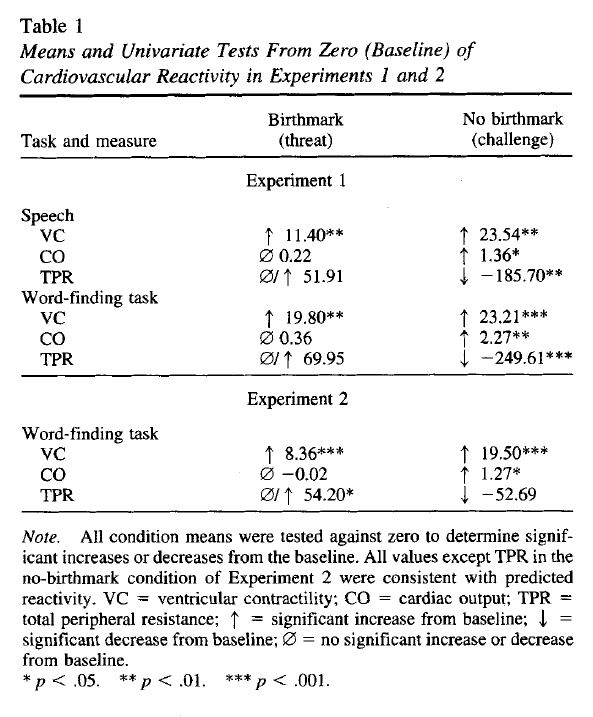Group Processes and Intergroup Relations
I've written a tutorial on electrodermal activity in neuro which might be useful when reading this article.
Blacks and whites don't trust each other
Olsson et al. 2005 replicates a classic experiment designed to measure the activity of the ANS in the associations it makes between aversive (scary or displeasing) events and "fear-relevant" or "fear-irrelevant" visual stimuli. The classic example is the differential association between a snake and a butterfly and an electric shock. We can measure the association made by the ANS between the shock and the image by presenting the image a second time without a shock, and measure how much shock was "expected" by the ANS through skin conductance.
The results are shocking, and seem to peer into something very deep in our psyche -- somewhere in the limbic or paralimbic systems, or even in the brain stem. Blacks more readily associate a shock to the visual stimulus of a white man than to that of a black man. Whites more readily associate a shock to the visual stimulus of a black man than to that of a white man.
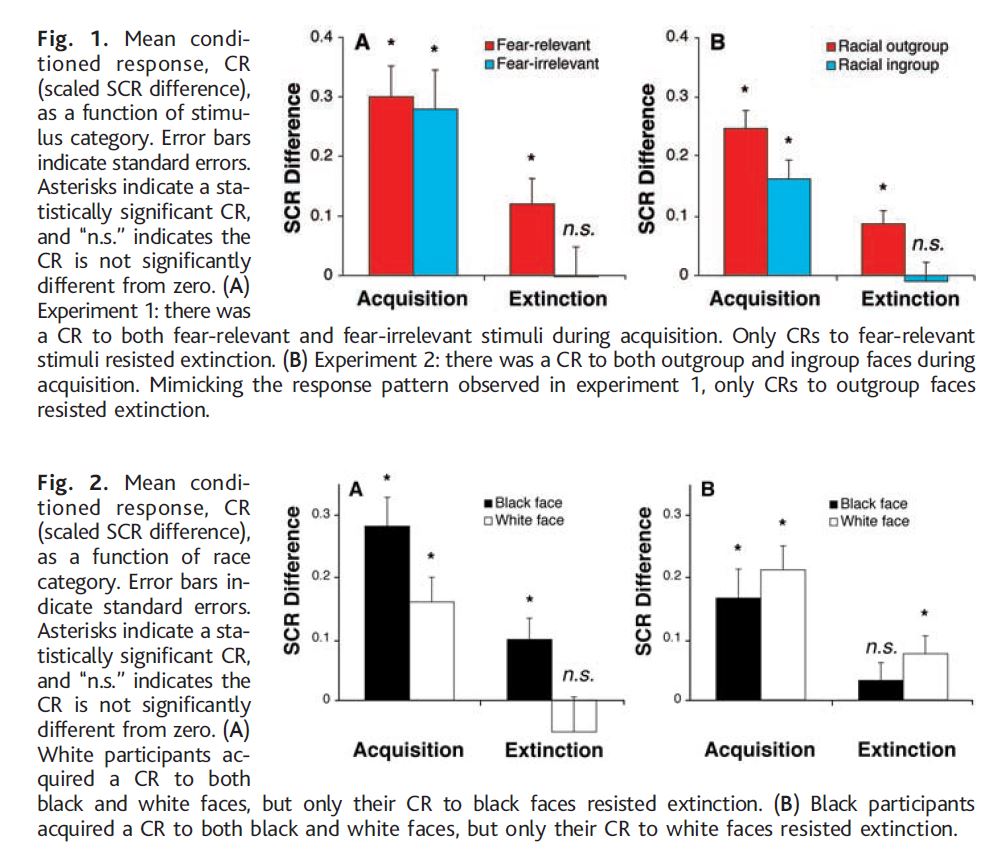
Paper terminology
-
SCR = skin conductance response
-
CS+ = reinforced conditioned stimulus
-
CS- = unreinforced conditioned stimulus
-
CR = conditioned fear response
- =
SCRofCS+minusSCRofCS-from same category
- =
-
extinction phase = no shocks at all
-
acquisition phase =
CS+andCS-for each category
The pain of losing to a rival team
The Red Sox brain looks like it's in pain when it sees its team lose to the Yankees
Cikara, Botvinick, and Fisk (2011) put avid baseball fans in a brain-scanner and showed them the best and worst plays their team had ever had. Researchers saw the neural correlates of pain and pleasure in these fans' brains.
They had an incredible method of selecting the fans to be studied, testing them on their dedication to the team: "To be included in the study, participants had to correctly identify photos of three Red Sox players and three Yankees players that we selected, as well as the position of a fourth player we selected from each team." (p. 307)
The 'cherry on top' which gives them the last two words of their title is a statistical association between (1) the magnitude of the neural correlates of pain/pleasure in the fan and (2) the difference between their likeliness to harm a rival baseball fan (self-rated) and a random baseball fan (self-rated). For them, this suggests "a neural account for the link between valuation of witnessed outcomes and willingness to harm." The data they have to support this interpretation is meager, as evidenced by the plot they buried in the supplementary material, shown below. This compounds with the fact that these are self-reports, and the dubious extension of sporting rivalries to other social groups. Allowing readers to draw such interpretations from the data the authors present is unfortunate.
| Measures of aggression | Correlation |
|---|---|
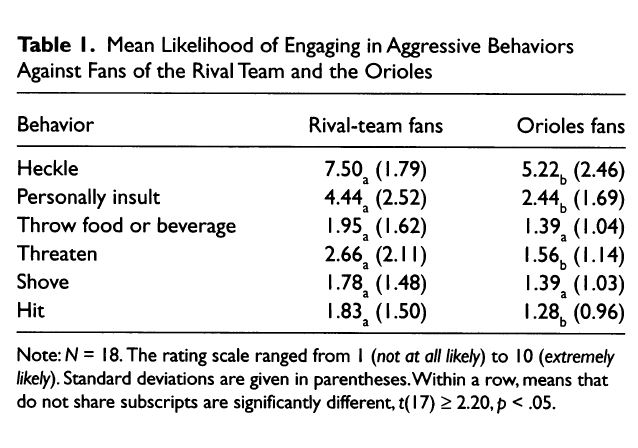 |
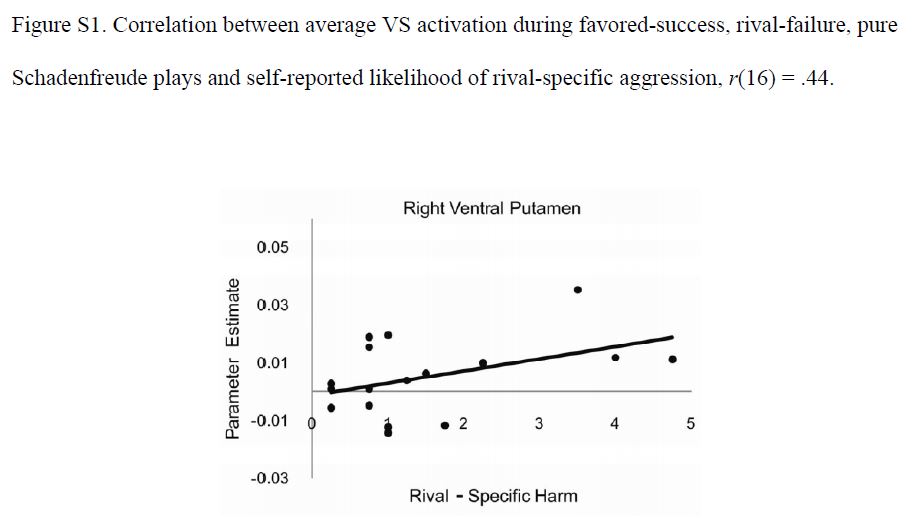 |
Brain-mapping of in-group bias
Bavel, Packer and Cunningham (2008) engage in some brain-mapping, trying to understand which parts of the brain mediate in-group bias.
- In-group bias is measured by "self-reported liking for the faces" (abstract)
- A group insignia is displayed for 6 seconds before and 2-8s after a novel face is presented.
The prompt: ‘‘people can often quickly determine who they like or dislike based on subtle facial features and expressions’’ (p. 1133) and... do you like X face? 1-6
| Accuracy and Reaction Time | Brain map |
|---|---|
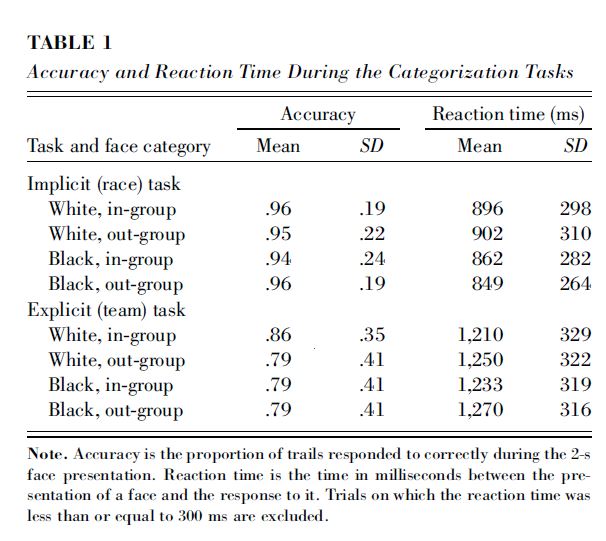 |
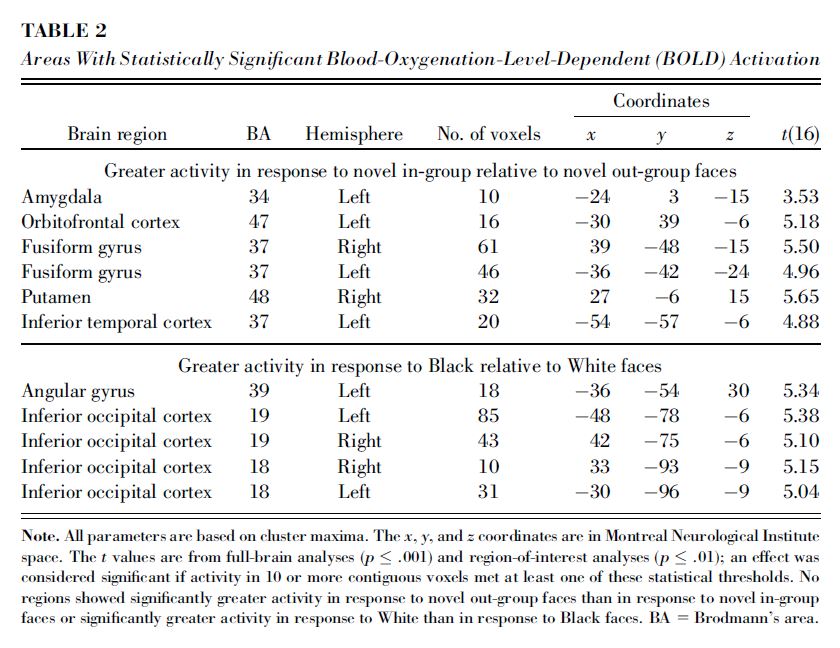 |
OFC mediates in-group bias
in-group bias was significantly reduced (from , , to , ) when we controlled for increases in OFC activity (in-group – out-group; , ). (p. 1136)
Perceiver Threat in Social Interactions With Stigmatized Others
Experiment 1
- Had a confederate (a researcher in disguise) interact with the subject
- The two conditions correspond to whether or not the confederate had a large birthmark on her face
- The confederate doesn't even know whether she has the birthmark or not! Clever
- Measured cardiovascular response continuously
- Structured interaction between confederate and participant
- Information exchange
- Speech delivery
- Cooperative task
